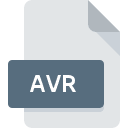.NKI File Extension

KONTAKT Instrument File
| Developer | Native Instruments |
| Popularity | |
| Category | Audio Files |
| Format | .NKI |
| Cross Platform | Update Soon |
What is an NKI file?
The .NKI file extension is associated with a specialized file format utilized predominantly by Native Instruments Kontakt, a widely acclaimed software sampler.
Kontakt has gained a reputation in the music production industry for its comprehensive library of sounds and its extensive capabilities for sound manipulation and performance.
The .NKI files are essentially instrument files that contain specific sound samples and settings, enabling users to reproduce a wide array of musical instruments and sounds within the Kontakt interface.
More Information.
Since its inception, the .NKI file has been integral to the Kontakt ecosystem. The initial purpose of the .NKI file was to provide a container for storing meticulously sampled sounds along with their associated settings, such as key mapping, loop points, and performance parameters.
This format was designed to ensure that users could not only access high-quality samples but also have the flexibility to manipulate these sounds to fit their creative vision.
Origin Of This File.
The .NKI file extension originates from Native Instruments, a prominent company in the digital music production sphere.
Native Instruments has been at the forefront of developing cutting-edge audio software and hardware, with Kontakt being one of its flagship products.
The introduction of the .NKI file format was a strategic move to enhance the functionality and versatility of Kontakt, allowing it to cater to the diverse needs of musicians, composers, and sound designers.
File Structure Technical Specification.
An .NKI file is structured to be a self-contained unit that holds not just the audio samples but also metadata and scripting information.
This data is crucial for defining how the samples behave when triggered and manipulated within Kontakt.
The file structure is optimized to ensure fast loading times and efficient performance, crucial factors for professional music production environments.
How to Convert the File?
Converting .NKI files to other formats is not a direct process due to their complex and proprietary structure, which encompasses not just the audio samples but also scripting, mapping, and instrument settings.
You can effectively ‘capture’ the audio output of an .NKI file and save it in a more universal audio format. Below are steps and considerations for this process:
1. Load the .NKI File in Kontakt:
- Open Native Instruments Kontakt.
- Load the .NKI file by dragging and dropping it into Kontakt’s interface or by using the file browser within Kontakt.
2. Prepare Your DAW (Digital Audio Workstation):
- Open your DAW (e.g., Ableton Live, FL Studio, Logic Pro).
- Create a new project and set up a track to record the output from Kontakt.
- Ensure that Kontakt is routed correctly into the track for recording. This typically involves setting the output of the track hosting Kontakt to the input of the recording track.
3. Record the Output:
- Arm the recording track in your DAW.
- Play the sequence or notes you wish to convert from the .NKI file. This could be done via a MIDI controller, by programming a MIDI sequence in the DAW, or by triggering notes directly within Kontakt.
- Start recording in the DAW and capture the output of the .NKI file.
4. Edit and Save the Recording:
- Once the recording is done, you can trim, normalize, or apply any additional processing to the recorded audio as needed.
- Export or bounce the recorded segment to your desired audio format (e.g., WAV, MP3) using your DAW’s export or bounce function.
Advantages And Disadvantages.
Advantage:
- High-Quality Sound: .NKI files often contain high-fidelity samples, providing a rich and authentic sound experience.
- Versatility: Users can tweak various parameters within the .NKI files, making them highly adaptable for different musical contexts.
- Integration: The .NKI files are designed to work seamlessly within the Kontakt ecosystem, which is compatible with most digital audio workstations (DAWs).
Disadvantage:
- File Size: High-quality samples mean larger file sizes, which can be demanding in terms of storage and memory.
- Compatibility: Being proprietary, .NKI files are primarily limited to the Kontakt player, potentially restricting their use in other software environments.
How to Open NKI?
Open In Windows
- Native Instruments Kontakt: The primary method is through Kontakt, which is available for Windows. Install Kontakt, then either double-click the .NKI file or drag it into the Kontakt interface to open.
- Third-party Samplers: Some samplers other than Kontakt might offer limited compatibility with .NKI files.
Open In Linux
- Wine or Similar Compatibility Layer: While Kontakt does not natively support Linux, users can attempt to run it through compatibility layers or emulators like Wine. However, this method’s effectiveness can vary greatly, and performance might not be optimal.
Open In MAC
- Native Instruments Kontakt: Kontakt is also available for macOS. Install it, and then open .NKI files similarly to how you would on Windows.
- Third-party Samplers: Like on Windows, some third-party samplers on macOS may offer limited compatibility with .NKI files.
Open In Android
- Kontakt Mobile Solutions (if available): Currently, there’s no direct method to open .NKI files on Android devices because Kontakt does not have an Android version.
- Some third-party app: may claim compatibility or provide the ability to use samples from .NKI files, but functionality is likely to be limited and not on par with the desktop version of Kontakt.
Open In IOS
- Kontakt Mobile Solutions (if available): Similar to Android, iOS does not support the full version of Kontakt, and there’s no direct way to open .NKI files. While some professional music production apps might offer ways to work with the sounds from .NKI files, they typically won’t open the .NKI files directly. You might need to convert the .NKI files into a compatible format using a desktop system before transferring them to the iOS device.













